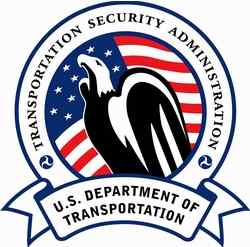Upcoming Security Training Presented At AirVenture
Approximately two years ago, the Department of Homeland Security
(DHS) solicited proposals for the development of a training program
for improving security awareness and preparedness at general
aviation airports. Via competitive proposals, in 2005, a $750,000
grant was awarded to Waukesha County Technical College (WCTC) in
Pewaukee, WI.

WCTC has a department which is dedicated to Homeland Security
and is staffed by educators with extensive backgrounds in law
enforcement and emergency response. WCTC proposed the development
of a model which could be used to determine the training needs that
address the diversity of general aviation aircraft and airports
along with a methodology for implementing the training that
considered the industry's limitations in time and resources.
Today at Osh Kosh, representatives from WCTC along with the
Experimental Aircraft Association (EAA) presented an overview of
the program which they expect to be approved by DHS sometime in
August 2007 and available to the general aviation community in
September 2007.
The program is divided into four modules, three of which are
targeted to pilots and airport personnel and the fourth, targeted
to local first responders, i.e. police, fire and other emergency
response entities.
In doing the research to develop the training model, WCTC
established an advisory leadership committee and reached out to
over 25 stakeholders which include the Aircraft Owners and Pilots
Association (AOPA), EAA, Transportation Security Administration
(TSA), law enforcement and emergency responders who are also
pilots, and others, such as the local business community.
Input from these various stakeholders reveal that there is a
significant gap in relationships between general aviation airports
and local emergency responders and a lack of awareness of aviation
operations amongst emergency personnel.
Brian Dorow, Associate Dean, Department of Criminal Justice
Center for Law Enforcement Homeland Security and Counter-Terrorism
Initiatives at WCTC noted that most general aviation airports do
not have their own police or fire services, so they rely on the
local agencies. "When I was a law enforcement official, I barely
knew where the entrance to the airport was", said Dorow. "In our
research, we found that this was a common issue in many
communities".
 The introduction of the modules came with positive comments
from EAA. According to Randy Hansen, with EAA Government Relations,
"this program is one-level above AOPA Watch", where local first
responders are being included in the process.
The introduction of the modules came with positive comments
from EAA. According to Randy Hansen, with EAA Government Relations,
"this program is one-level above AOPA Watch", where local first
responders are being included in the process.
According to Jim Kerr, Project Manager with WCTC, because
General Aviation Airports and facilities have limited capital
resources, the training initiatives are focused on human solutions.
Most every pilot has a cell phone, said Kerr, and knowing when and
how to use it for security is part of this training.
The first three modules, which are referred to as Levels, are
focused on "Security Training for Aviation Stakeholders". The
distinction between the levels was not described in the brochure
provided by WCTC, but based on their comments it appears that Level
1 Training is geared towards small airstrips which, according to
Brian Dorow, could be as small as a grass strip on a farm. Level 2
Training is focused on airports with paved runways, but no control
towers and Level 3 Training is focused on airports with active air
traffic control towers. Level 4 Training is focused on first
responder personnel.
Access to the training will be free, online. Each level is
estimated to take between six and eight hours. The training is
structured to be progressive, so pilots who operate aircraft at
towered airports would ideally take Levels 1 through 3.
WCTC is submitting the final reports to DHS this month and given
DHS approval, expects the modules will be available in September.
Grant funds remain in WCTC's contract for outreach and
"train-the-trainer" education for communities interested in
providing classroom training. Brian Dorow indicated that the
initial outreach strategy will be to market the program through
professional associations that represent the aviation and first
responder industries. Brian also mentioned that this program is a
first of its kind in the US and while the development was funded by
DHS, it remains a voluntary program for all involved.
 ANN's Daily Aero-Linx (04.13.24)
ANN's Daily Aero-Linx (04.13.24) ANN's Daily Aero-Term (04.13.24): Beyond Visual Line Of Sight (BVLOS)
ANN's Daily Aero-Term (04.13.24): Beyond Visual Line Of Sight (BVLOS) Airborne 04.09.24: SnF24!, Piper-DeltaHawk!, Fisher Update, Junkers
Airborne 04.09.24: SnF24!, Piper-DeltaHawk!, Fisher Update, Junkers Aero-News: Quote of the Day (04.14.24)
Aero-News: Quote of the Day (04.14.24) ANN's Daily Aero-Term (04.14.24): Maximum Authorized Altitude
ANN's Daily Aero-Term (04.14.24): Maximum Authorized Altitude




